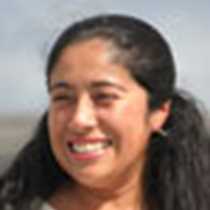We woke up at Academy Bay, Santa Cruz Island. This is the most inhabited island in the Galapagos Archipelago; more than twenty thousand people call Santa Cruz Island their home nowadays. In the morning we visited the famous giant tortoise breeding center. This is the most successful program run by the Galapagos National Park Service, and one of the most visited sites in the Galapagos. Today we were very lucky, the tortoises were very active. We even saw tortoises from different islands. After this awesome visit, there was time to wander around the cozy town of Puerto Ayora. Afterwards, we took buses and headed towards the highlands. We had a lot of fun visiting Don Adriano’s farm; here we learned about sugar cane and coffee. Then we had an exquisite lunch at Aquelarre Restaurant and the highlight of the day was the unique experience of walking among the emblematic animals of the Galapagos, the giant tortoises in their natural habitat! It was a great day, full of new experiences that will last in our memories forever.
6/13/2025
Read
National Geographic Endeavour II
Genovesa Island
We started the day with excitement as we landed on the beautiful, pristine coast of Isla Genovesa - a true birder’s dream. Along the sandy beaches and steep cliffs of Darwin Bay, we were surrounded by an incredible array of birdlife. Frigatebirds soared closely overhead with their red pouches on full display, while Nazca and blue-footed boobies nested along the rocky ledges. Swallow-tailed gulls called out as we walked past. In the distance, we saw the stoic and elusive short-eared owl. The island was alive with color, sound, and constant movement. Between our excursions to Isla Genovesa, we snorkeled near Prince Philip’s Steps and discovered a vibrant world beneath the waves. Schools of fish swirled around us, a fur seal turned in the water as if dancing on cue, and sea lions relaxed nearby. As our last snorkeling adventure came to a close, we spotted a sea turtle resting calmly in a crevice. As the sun retreated into the sky on our last return to National Geographic Endeavor II, we reflected on the sheer magnitude of what we witnessed on our last full day. Isla Genovesa, like the other islands, gave us a connection to a sacred world. The harmony between land, sea, and sky reminded us how deeply interconnected, vital, and fragile these ecosystems are. Watching birds tend to their nests and marine life swim effortlessly, we were struck by how little space there is between wonder and reverence. We recognized that our journey wasn’t just about observing unique wildlife, it was about feeling part of something grander and beautifully ancient.







